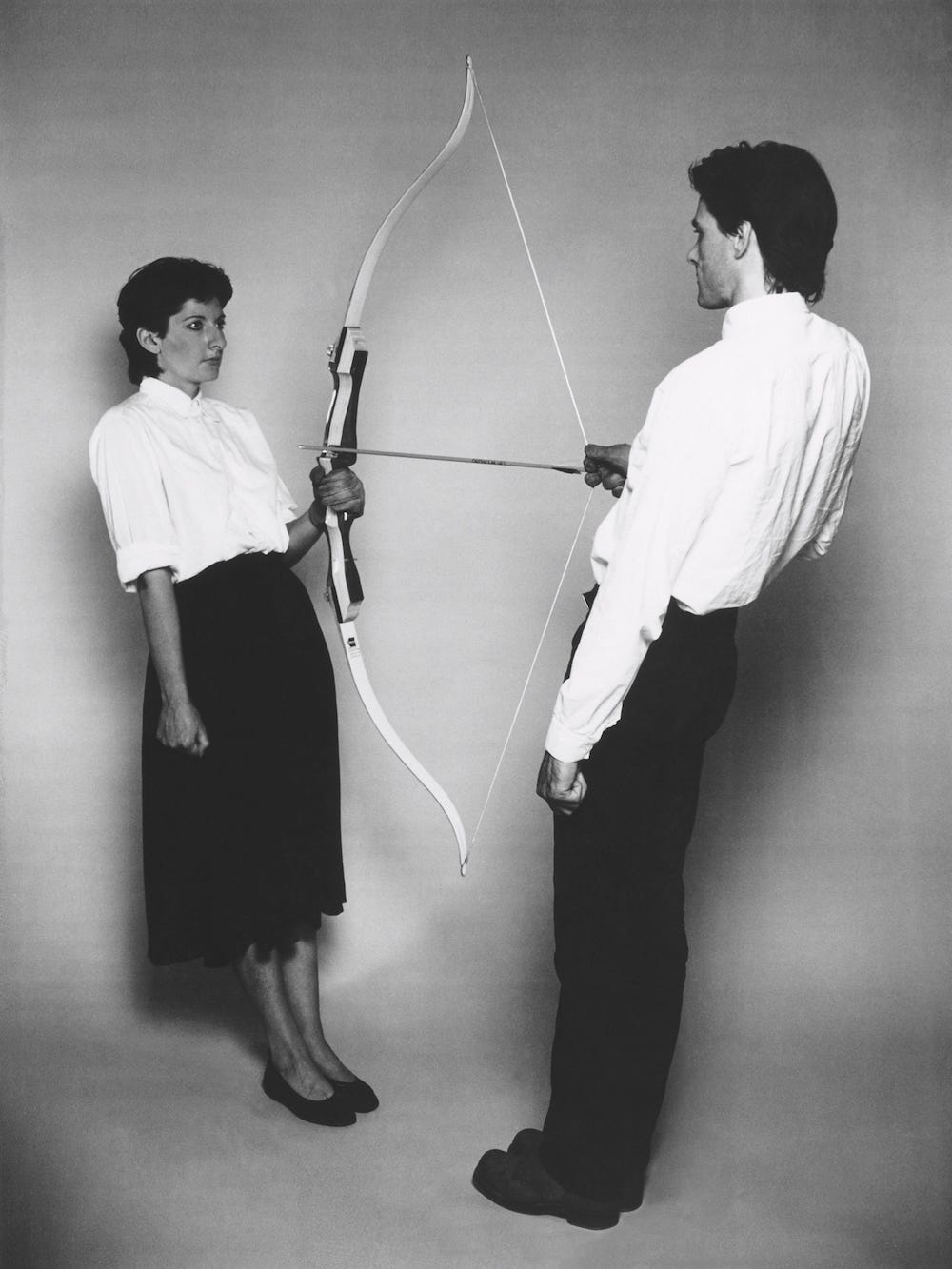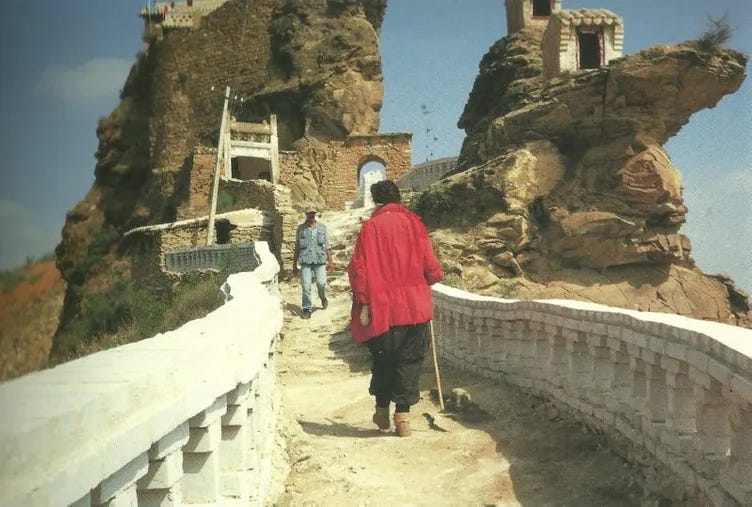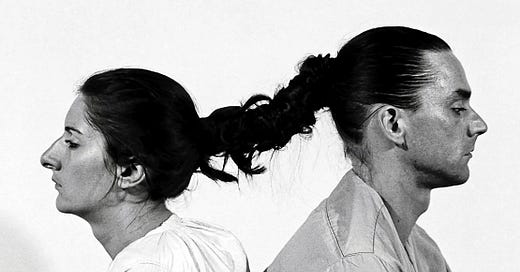
In 2014, Gwyneth Paltrow unleashed the term “conscious uncoupling” onto the world as she announced the end of her marriage to her then-husband, Chris Martin, the lead singer of Coldplay. For some creative context, this was Gwyneth’s Marvel era and Coldplay released Ghost Stories, a mellow album largely about loss and heartbreak.
Perhaps it was because she announced the split on Goop’s newsletter, her lifestyle brand notorious for being bad and bougie, that the idea of conscious uncoupling was met with more mockery than praise. For many, conscious uncoupling felt like another Goop product for divorce—high brow to the point of inaccessible, an intellectualized decoration for sale, like their $75 “This Smells Like My Prenup” Candle.
Pop culture turned this therapy concept into an irreverent buzzword, and yet it still opened our imagination to the evolution of partnership after romantic love. I remember being intrigued by this idea, interpreting it as an intentional way to unravel the relationship in order to keep the family intact. In 2020, Gwyneth penned a self-aware follow-up article for British Vogue, reflecting on her divorce and her unintended contribution to break-up culture. She writes:
“I had never heard of the phrase “conscious uncoupling.” Frankly, the term sounded a bit full of itself, painfully progressive and hard to swallow. It was an idea introduced to us by our therapist, the man who helped us architect our new future. I was intrigued, less by the phrase, but by the sentiment. Was there a world where we could break up and not lose everything? Could we be a family, even though we were not a couple? We decided to try.”
I want to acknowledge that every relationship, marriage, and family is different, and while this concept is aspirational in theory, it may not be a realistic or safe option in practice. But when the people involved are committed to a relationship’s undoing to the same extent they were committed to its becoming, what possibilities can form from those rituals? I’m fascinated by it.
June is wedding season, and a reminder that we participate in so many traditions across cultures to celebrate how people come together—engagement, marriage, anniversaries, etc. But what about the rituals to honor how people come apart? It’s rare when we can witness the act of unbinding partnership—it goes without saying that shame, pain, and sadness are private feelings often too vulnerable to share. How do you then create a symmetrical ritual to end a union? And if you’re able to withstand the inevitable scrutiny, how do you invite people to bear witness to it?
This month, we’re exploring albums and performances that mark life milestones and the ending rituals around them.
Track 11 is about creative collaborations as the means to end relationships. This ain’t just a break-up album. It’s a performance in symmetry. Walk it out.
Last week I wrote about Kanye West’s stadium-sized listening parties that he performed in the summer of 2021 to promote Donda, an album effectively about his divorce. His final and most personal listening party in Chicago ended with his estranged wife, Kim Kardashian West, simulating a walk down the aisle in a Balenciaga wedding dress to his song, “No Child Left Behind.” While the song’s sustained organ chord progressions with swelling choral harmonies produce a holy, triumphant sound, lyrically, he describes the anxieties around losing his family through divorce. Kim approaches him as an ethereal figure, covered by a veil. Kanye, who had literally just set himself on fire moments before, also wears a spiked Margiela mask. When they finally meet, he removes it and flashes a smile, shedding his literal and figural armor. The lights go out abruptly. The crowd erupts in cheers. Rewind to the past to unbind the future.
I’m not going to comment on the media frenzy that ensued after their split or what we think we know about their relationship. However, I do want to make light of the symmetry here between the performance and consumption of their wedding and divorce. Keeping Up with the Kardashians documented their wedding for millions of viewers, through her narrative and medium of reality TV. For them to come back together to promote Kanye’s album through a divorce performance, in some ways, adds a counterweight to the perspective. I’m not sure if they reach a balance here, but they both showed up to perform a union and unravel it, sharing both events with the world that will last in perpetuity on the internet and on E! reruns.
Some consider this event merely as a publicity stunt—how they played up the ambiguity of their reunion was lighter fluid on social media’s ever-glowing embers. But if we interpret this uncanny re-enactment of their wedding as an ending ritual to their marriage, it becomes less about their relationship to each other, and more about their relationship to their audience. Their respective fandoms and haters, both equally invested, voracious, and loyal, amplify the art through the collective reaction. The bride becomes an apparition; the groom becomes a shell of armor; the stadium crowd represents the obscured echo chamber of the internet—speak now or forever hold your tweets.
The act of walking in graduation and marriage ceremonies represents the journey it takes to arrive and the one that lies ahead. A procession for a diploma. A walk down the aisle for a life partner. What do you get at the end of walking away from a relationship? The Lovers, a performance by Marina Abramović and Ulay, in my opinion, shows the poetic and heart-shattering possibilities within an intentional unraveling.
For background, Marina Abramović is a performance/conceptual artist, perhaps most known for her 2010 MoMA performance piece, The Artist is Present. (She sat silently at a table across from one museum patron at a time, 8 hours a day for 3 months.) Early into her career, she moved to Amsterdam, and met performance artist Uwe Laysiepen, aka Ulay. They soon became partners in love and art, performing as one artist. Their art pushed ideas of endurance, human limitations, mortality, and trust. For Relation in Time, they tied their hair together and sat unmoving for 17 hours. In Rest Energy, they balanced an arrow pointed directly at Marina’s heart with their own body weight. Microphones attached to their chests recorded their accelerating heartbeats and heavy breathing as the piece progressed.

In 1983, they announced their plan for a performance piece and commitment ceremony called, The Lovers. They planned to marry each other by walking from opposite ends of the Great Wall of China, where they would wed in the middle. In the 8 years it took to finally get permission from the Chinese government to attempt this, their relationship changed. For 90 days, they trekked towards each other, but instead of marrying on the wall, they decided to end their partnership.

In Marina’s (paraphrased) words from a MoMA interview:
“When we were in the Australian desert and living with the Aborigines, we were looking at this report of astronauts who said that the only human-made constructions that can be seen from the moon are the Pyramids and the Great Wall of China. And then we got this idea, to walk the Great Wall. It took us about eight years from that moment to get permission from the Chinese Government.
The Great Wall of China was built, not just as a defense from the Genghis Khan and intruders to China, but more like a metaphysical structure. The Great Wall is a replica of the Milky Way on the Earth. It starts in the Yellow Sea. The head of the Dragon is buried in the sea, the tail is in the Gobi Desert, and the body is in the mountain. Ulay as the fire, as the male, started from the desert. I started from the water, as the female, from the sea.
Each of us walked two and a half thousand kilometers to meet in the middle and depart from each other and from working as a single artist. It was very dramatic and a very painful ending.”
Ulay and Marina’s parting was understandably bitter. (For more details about their journey, read this Guardian article.) While their relationship had run its course before the walk, there was still some ambiguity about whether or not they could reconcile. When they met on the wall, he told her that he had impregnated his translator. “What should I do?” he asked her. She responded, “I leave and you do whatever you want.” He ended up marrying the mother of his child. For 12 years, their lives were completely intertwined. After their walk on The Great Wall, they didn’t speak or see each other for 22 years.
Here is a clip from their documentary, where they explain their relationship and parting in their own words:
Given the choice, the path built to walk away is the same means of return. On the opening day of The Artist is Present in March 2010, they finally reunited. Ulay surprised Marina and took the seat across from her. Their reunion was surreal and emotional. She was so moved and shocked that she broke her own rules of no contact by reaching over to clasp his hands. While their last collaboration remains as The Lovers, this is another kind of collaboration, another kind of ritual, isn’t it? Not one planned together over years, but one of spontaneous reconnection over seconds. I want to believe that intentional unraveling with time and space away creates the opportunity for this kind of reconnection. Both draw from the same process, the same force of shared history.

Beyond the magnitude of the piece, The Lovers stands out as Marina’s only performance without a live audience in her entire career. It feels compelling to note since the audience is a core piece to her creative expression. In a 2017 Design Matters with Debbie Millman interview, Marina explains the role of the audience in her work:
“When you have the concept, you have to count on the energy of the audience as a gift to you, in order to push your limits much farther.”
Even though Marina and Ulay shared the films from their walk on the Great Wall with the public, their experience performing this piece was individual, inward, and solitary. Without the energy of the audience, they were left to their own thoughts, processing the idea of working apart and the potential for what would come next. Performance art with an audience offers the means to evolve through a creative process and find new ways to connect externally to others. This performance sans audience, allowed them to connect internally within and to reimagine their work not as one unified artist, but as two separate minds.
Witnesses and documentation serve as a kind of validation—to feel seen—even if perceived critically. Sometimes the greatest feeling of catharsis is not in the making, but in the sharing, when the pain of unraveling isn’t solely yours to bear anymore.
When you perform rituals to connect with others, you invite them into the communal experience, its collective effervescence. Doing so widens the space and possibility for others to reflect. I believe we have more rituals for joyful beginnings than painful endings because rituals keep us grounded in the present. We want to express and sustain joy for as long as possible, but it’s hard to hold onto. To be present in pain, to actually feel through it? Nah—we try to move past it as quickly as possible. Rituals serve us best through more complicated times, or perhaps, when they help us address our complexities.
Not every relationship ending needs a joint commemoration, and most people lack the desire and capacity to do this. But within these examples, it’s important to acknowledge (but not glorify) the transcendence of creativity and its ability to grow in austere and painful conditions. We see commitment morph from the bond to another and into the need to express its truth. We assume muses are people, or love itself, but the muse is also the evolution of connection. The muse is always curiosity.
I’m most comforted when I think of endings as evolutions, detached from any precedent, timeline, or expectation. I find courage in people exploring new ways to trust and express themselves in their most vulnerable states. I feel hope when fragments form foundations. I’m inspired by the choices to create rituals that express important life events outside of established structures.
Take a walk.
Thanks for reading.




I loved this piece so much. so much to reflect on. Will circle back but right now just meditating on the words penned.
This was a beautiful piece!